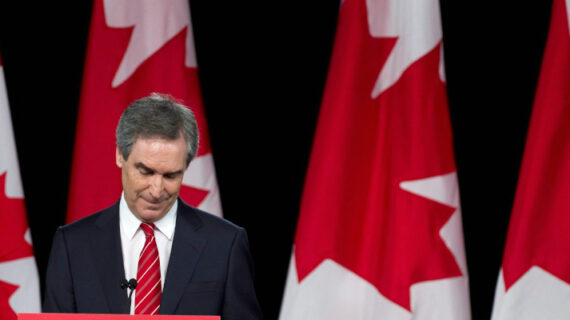Welcome to The Hub’s Federal Election 2021 Policy Pulse, where we’ll be tracking all the policy announcements from the major parties, with instant analysis from our crew of experts.
With the election scheduled for Sept. 20, we’ll be monitoring 36 days worth of policy ideas, so watch out each morning for the day’s live blog where we’ll be tracking every announcement as it happens.
3:30 p.m. — The election campaign may not be focused on China, but China is paying attention
By L. Graeme Smith, The Hub’s content editor
The idea that foreign policy would be an absent issue this election was proven almost immediately wrong when the calamity of the Afghanistan withdrawal began to crest just as the snap election was called.
The opening weeks of the campaign were thoroughly infiltrated by discussion, from an often personally invested press, around Afghanistan and Canada’s obvious fumblings there.
With Afghanistan mostly occupying the limited foreign policy bandwidth of this campaign, there has been little big picture discussion on other pressing foreign policy problems, including Canada’s relationship with China (aside from occasional questions around the two Michaels who remain detained by the Communist regime). This is despite the importance of the issue to the Canadian public.
The Hub’s exclusive polling, conducted by Public Square and Maru/Blue and released earlier in the year, showed that 75 percent of Canadians are uneasy with the prospect of China becoming the next global superpower. Of these uneasy respondents, 65 percent are worried about the Chinese government imposing its will on Canada.
But while the Canadian campaign has not been focusing much on China, China has been paying attention to the campaign. A recent article in the Global Times, a Chinese tabloid owned by the Chinese Communist Party, warned that if Canada implements the Conservative Party policies related to China, “it will invite counterstrikes from China, and Ottawa is the one to suffer.”
The article quotes Chinese commentators who describe the policies as “unusually hostile” and catering to the country’s “toxic anti-China atmosphere.”
The Conservative party platform references China 31 times, highlighting plans to rebalance Canada’s trade priorities and reduce reliance on Chinese supply chains, withdraw from the China-led Asian Infrastructure Investment Bank, and ban Huawei from Canada’s 5G infrastructure.
The NDP platform includes four mentions of China, while the Liberal platform references China only once, promising to “respond to illegal and unacceptable behaviour by authoritarian states, including China, Russia, and Iran.”
Meanwhile, The Globe and Mail reports today that as the Chinese government was trying to deepen relations with Canada and further enmesh our economies with a free trade deal in 2016, a Chinese state publisher republished Prime Minister Justin Trudeau’s memoir, Common Ground, under the title The Legend Continues.
12:30 p.m. — Who has the best housing plan? A policy deep dive into the major platforms
By Chris Spoke, contributor at The Hub
There are three ways to make housing, or anything, more affordable. You can increase supply, reduce demand, or set price controls. This is an exhaustive list.
As we look at the policy proposals relating to housing affordability from the Liberal (LPC), Conservative (CPC), and New Democratic (NDP) parties, we can find some that fit into the first two of these buckets. Thankfully, none of the major parties have proposed anything like a federally mandated rent or vacancy control.
On the demand side however, we have seen a number of proposals from the LPC and NDP specifically that would also increase demand — a counterintuitive approach if affordability is the objective.
Let’s dive in.
On supply
Canada has the fewest homes per thousand people of any G7 country. This statistic, more than any other, highlights the cause of our housing affordability crisis. Housing in our major cities is expensive because there’s not enough of it.
If the federal government is going to make any improvements in this domain, it’s going to have to enact changes that lead to more housing supply.
The three party platforms all start with big overarching promises on supply and are then filled in with the policy proposals intended to substantiate those promises.
The LPC starts with a promise to “build, preserve, or repair 1.4 million homes in the next four years”, though it does not make clear how much of that would be new supply (the “build” share).
For context, over the past decade, Canada has averaged approximately 200,000 housing completions per year.
To make good on that promise, they’ve proposed a number of potential supply-boosters. The four most impactful are as follows.
- A new rent-to-own program that would put renters, paying mandated below-market rates, on a five year path to ownership, paired with $1-billion in loans and grants to develop and scale up rent-to-own projects.
More money for more housing, though with a twist. There’s not much to say about this proposal other than to point out that 1) the development of new below-market rate rental housing is generally not economically feasible, 2) this is especially true given the record land and construction prices we’ve been experiencing lately, and 3) that $1-billion in loans and grants might not generate as many new units under this model as expected.
- A new $4-billion Housing Accelerator Fund to support municipalities that “grow housing supply faster than their historical average; increase densification; speed-up approval times; tackle NIMBYism and establish inclusionary zoning bylaws; and encourage public transit-oriented development.”
This is the most meaningful LPC proposal as it acknowledges municipal regulatory supply constraints as key drivers of housing scarcity and unaffordability. It creates in effect a success fund, and leaves it up to municipalities to pare back those supply constraints in order to claim their share.
- A major funding increase for the National Housing Co-Investment fund of $2.7 billion over 4 years to help affordable housing providers acquire land and buildings for development and pay for critical repairs on existing buildings.
More money for more housing. There’s not much to say about this one either.
- A new Multigenerational Home Renovation tax credit that would help homeowners save up to $7,500 when adding a secondary unit to their homes for an immediate or extended family member.
This proposal should increase the number of secondary unit additions at the margin. More importantly, it should also increase political support for secondary units where they’re not currently permitted.
The CPC, for its part, promises to “implement a plan to build 1 million homes in the next three years.” If past housing completion data are to be extrapolated from and carried forward, this could mean 400,000 more homes over three years than we might otherwise have seen.
The three most impactful proposals that might help them fulfill that promise are as follows.
- The construction of new transit infrastructure connecting employment centers to “where people are buying homes”.
As we’ve failed to build sufficient housing in our major cities, more people have had to “drive till they qualify” and live farther and farther from their workplaces. The CPC is proposing more transit connections from employment centres to these suburban and exurban neighbourhoods. More transit is good. More housing closer to employment centers is even better.
- A new requirement that municipalities receiving federal funding for public transit increase permitted densities near that funded transit.
This is the most meaningful CPC proposal as it too acknowledges municipal regulatory supply constraints as key drivers of housing scarcity and unaffordability, and provides an elegant response. In Ontario, there already exists a provincial Major Transit Station Area framework that proposes the same thing. It’s not clear how this federal proposal would enhance that framework.
- A new capital gains tax deferral when selling a rental property and reinvesting the proceeds in rental housing.
Many rental properties in Canada are owned by the children and grandchildren of the entrepreneurs who built them. They’ve appreciated substantially over those many years and would therefore be subject to a large capital gains tax if sold. For that reason, they’re not often sold. A tax deferral could lead to increased market liquidity and more returns being put to productive use in the development of new rental housing.
Finally, the NDP doesn’t have much to say about increasing the supply or market-rate housing but does promise to “create at least 500,000 units of quality affordable housing in the next ten years.” This promise is supported by two proposals.
- A new “fast-start fund” to help streamline the entitlement process for co-ops, social, and non-profit housing providers.
The entitlements process that sees development projects through any required rezoning and site plan control is needlessly slow and complicated. Funding for measures that would streamline that process sounds like a good idea, though it’s not clear what those measures would include if they are to apply exclusively to non-market housing providers.
- A new exemption on the federal portion of the GST/HST on the constriction of new affordable rental housing.
The federal portion of the GST/HST is a meaningful cost on any development pro forma. This exemption should, at the margin, improve the feasibility of new affordable rental housing.
On demand
Prices, as we know, are a function of supply and demand. Both increased supply and decreased demand place downward pressure on prices.
And yet we spend most of our time talking about supply, and not demand. Why?
In short, increased supply generally means more homes for more people, whereas decreased demand generally means fewer people, or at least fewer people who can afford housing. Most of us think that more people and more homes is preferable to fewer people and fewer homes.
The most impactful thing the federal government could do to reduce demand for housing is reduce immigration. Our three major political parties are generally very pro-immigraiton, however, so that’s off the table (good!).
Instead, they’ve focused on reducing foreign ownership of housing and money laundering — where money laundering mostly means money from China, as China enforces strict capital controls that force its citizens to launder any money they’d like to invest abroad.
On the former, both the LPC and CPC have proposed a two year ban on home purchases by foreign non-resident investors. The NDP has proposed a 20 percent foreign buyer’s tax on this same group.
On the latter, all three parties have committed to cracking down on money laundering and proposed the development of a beneficial ownership registry for residential properties in order to peer behind any corporate veil and identify the true owners of any given residential property.
As mentioned above, the LPC and NDP have also proposed policies that would lead to an increase in demand.
The LPC has proposed a First Home Savings Account, increased flexibility for the First Time Home Buyer Incentive, a doubling of the First Time Home Buyer Tax Credit, and a requirement that banks and lenders offer mortgage deferrals for up to 6 months in the event of job loss or other major life event.
The NDP has proposed the re-introduction of 30-year terms to CMHC insured mortgages, as well as to double the First Time Home Buyer Tax Credit.
On overall effectiveness
To restate a foundational premise, housing in our major cities is expensive because there’s not enough of it. There’s not enough of it because municipal land use rules render large parts of our cities as being effectively out of bounds for any meaningful intensification.
NIMBYs have captured our municipal councils and ensured that they prioritize neighbourhood stability and property value appreciation over housing abundance and affordability.
Both the LPC and CPC promise to address these land use rules with legislative sticks and carrots. (The NDP sidesteps the issue entirely.) More than anything else, any success in advancing housing affordability will rest in their ability to use them effectively.
10:30 a.m. — A grumpy political scientist explains the difference between a coalition government and a confidence agreement
By Antonia Maioni, a political science professor at McGill University
Memo to Canadian journalists from a grumpy political scientist: please, please refrain from using the term “coalition government” unless actually referring to a formal coalition which entails a shared policy platform and the presence of more than one party in the cabinet.
The Canadian Parliament, based on the Westminister parliamentary tradition, has no example of this except that of the Union government during the First World War.
A coalition government is not the same thing as an “accord” (such as the one between the minority Liberal government and the NDP in Ontario in 1987) or a “pact” (such as the one between the minority Conservative government and the Bloc/NDP in 2004).
The latter are examples of confidence agreements, which can be formal or informal, in which opposition parties agree to support the minority government on key parliamentary votes of confidence. However, they are not coalitions because the minority government continues to govern alone, with ministers chosen from its ranks.
9:00 a.m. — Canada’s infrastructure spending too often leads to ‘political explosions’
By Drew Fagan, a U of T professor and former Ontario deputy minister of infrastructure
Infrastructure is one of those $100 words that can mean almost anything. The legendary American journalist Theodore White wrote that the word was meant “to conceal political explosives.”
In fact, it should be something that the major Canadian parties can agree on. Ottawa has boosted capital spending after decades of underinvestment. The Harper-era Conservatives got things rolling, and the Trudeau-era Liberals have spent more still.
But the Liberal platform says little about broad-based infrastructure investment to support economic growth. As for the Conservative platform, it calls for faster growth and cites infrastructure as a key accelerant, but makes a proposal regarding the Canada Infrastructure Bank (CIB) that would do the opposite.
Canada’s infrastructure challenge isn’t low public spending, but that it isn’t always spent in the right ways. It leads too often to political explosions. Projects are dickered over. Ottawa has let provinces and municipalities spend federal funds on projects of their choosing, often with politics rather than results in mind.
Other countries do it better. Australia, New Zealand and Great Britain have strategies looking out decades and processes to plan and deliver the best projects with the best chances of success. Even the U.S. government sometimes brings more coherence, mitigating against the kind of institutional tangle that mars, say, transit in the Greater Toronto and Hamilton Area.
Earlier this year, the Liberal government took a big step, launching a National Infrastructure Assessment (NIA) to prioritize through 2050 economic, social and environmental infrastructure.
What made it into the Liberal platform is more specific but aligned. Liberals propose to invest more in municipal housing if cities do more to tackle NIMBYism and support inclusionary zoning and density, especially near transit lines.
The Conservatives agree: Their platform would require “municipalities receiving federal funding for public transit to increase density near the funded transit.”
This could be the beginnings of a federal urban agenda in which Ottawa flexes some muscles. Still, both parties know the risks — from the provinces, which have responsibility under the Constitution for municipalities, and from municipalities, which are used to a hands-off approach. That’s probably why the Liberals aren’t emphasizing their plank. Meanwhile, the Conservatives are hiding theirs. The party’s headline pledge is that a Conservative government would provide “more flexibility” to municipalities. Actually, the fine print says it’s less and that’s probably the better way.
The NDP platform, meanwhile, promises to double the Canada Community-Building Fund, the renamed federal Gas Tax Fund, which flows to municipalities largely without conditions.
The infrastructure issue that’s gained most campaign attention is the Conservatives’ commitment to “scrap the failed” Canada Infrastructure Bank (CIB). It’s a promise that they’ll regret, if elected. The CIB got off to a slow start but it’s been gaining traction rapidly.
Had the Liberals not invented the CIB, the Conservatives would have. In fact, the Harper-era Conservatives launched the CIB’s precursor, the P3 Canada Fund. Like the CIB, it was aimed at putting more policy and less politics into infrastructure through public-private partnerships. The CIB redoubles this approach, broadening the private sector’s role regarding revenue generation, like user fees, and innovation in design, construction and operations. (Given CIB financing methods, the Conservatives wouldn’t get as much money as they might think for traditional government infrastructure programs by reallocating what was on the CIB’s books.)
The CIB deserves a chance. Likewise, the NIA deserves to go forward, regardless of election outcome. So why not mix the two?
The CIB was established not just to finance some infrastructure, as it does now, but to bring a more independent, policy-focused approach to a broader range of infrastructure planning. This part never really got off the ground, such as a national centre of expertise and advice, including for better use of data in decision-making. The CIB could do this by being given a leadership role in the NIA and in the reforms that should flow from it, which would turn a bank into an agency.
A Conservative government could rename it the Canada Infrastructure Investment Agency. Campaign pledge fulfilled. It would be good policy too.
7:00 a.m. — Where the leaders are today
Liberal leader Justin Trudeau will be in Richmond, British Columbia to make an announcement at 11 a.m.
Conservative leader Erin O’Toole will be in Russell, Ontario to make an announcement at 11 a.m.
NDP leader Jagmeet Singh will be in Toronto to make an announcement at 8:30 a.m.




